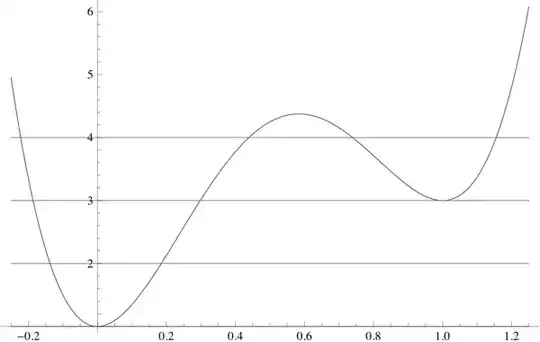Since $f(x) - 1$ has only one root and all coeficients are in $\mathbb{R}$, we have only two cases to consider:
Case 1. $f(x) - 1 = a(x - \alpha)^4$
In this case, the function obtained is convex (if $a > 0$) and concave otherwise. In particular, it does not have any horizontal line that crosses it $3$ times.
Case 2. $f(x) - 1 = a(x - \alpha)^2 g(x)$ with $g(x)$ without real roots.
Here, we have to use the other data. Since there is a horizontal line that crosses the function $4$ times, we know it must have $3$ local maxima or minima. Also, since the $4$ roots happen at line $y=4$, we know that $a > 0$ and also $g(x) > 0$, that is, the function is always above line $y=1$ (hitting it at point $x = \alpha$). This already provides a very precise picture of the shape of function $f$. If you start with line $y=0$ and begin moving it upwards, the number of roots changes in this sequence:
$$0 \to 1 (\text{at } y=1) \to 2 (\text{immediately after})\to 3 (\text{local min})\to 4 \to 3 (\text{local max}) \to 2 (\text{immediately after}).$$
Notice that this sequence does not have $1 \to 3 \to 2 \to 4$ as a subsequence.
